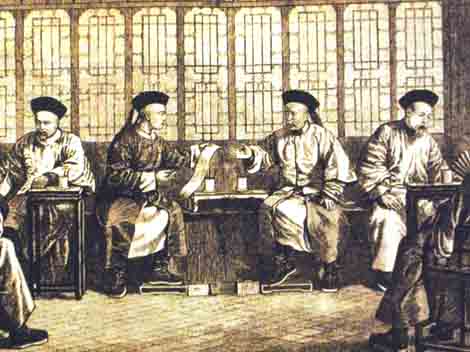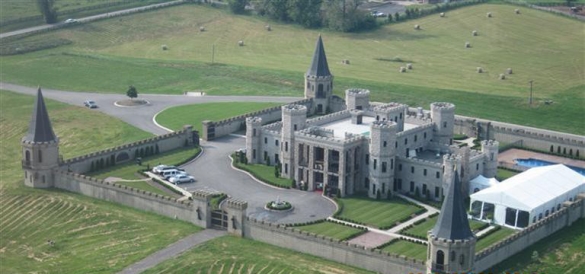Chapter Forty-One - The Great Amerikan Prepand [1]
(1799-1805)
The Duke of Blackbrook
After only twelve years on the Carolinian throne, King Dominick II had done more for the country than his father; he'd accepted refugees from New England, invaded the Ashanti Kingdom to start a race for Africa, and promoted the growth of stagnating Charleston and Jamestown. However, his economic and political spread had only took place outside of North America, and the home country was almost stagnating. Even with a forty years long series of wars in New England, Carolina only just outnumbered them on population. Growth had been good in the more religious states, but that meant that towns like Bakersfield and Wissax were surpassing even the capital in population. Dominick had plans to take over Louisiana from his French allies, but that couldn’t happen if there were no colonists actually moving west. The only people who were living in the frigid Appalachians were the descendents of the crazies who were exiled there two generations before. The original settlers’ grandchildren still seemed to hold a grudge towards the Carolian government for taking over the “Furorem Country” (Madness Country), but Dominick only intended to use that to his advantage.
For most of his reign, Dominick had lived in the Charles Palace, the castle first built by Charles’ slaves when he moved to the New World. It paled in comparison to the growing Parliamentary building half a mile down the royal road, where thirty of the three hundred and thirty-five delegates lived permanently in their lavish plantations. After the population of Carolina broke 300,000 and the number of delegates passed six hundred, Dominick’s grandfather had changed the system so that every member of Parliament represented five thousand people each instead of five hundred. But even in the sixty-odd years since the change, the number of delegates had once again jumped from sixty back to over three hundred, and Dominick was annoyed to see representatives from Appalachia going and walking around on his gardens. However, Parliament wasn’t his concern on that bright, spring morning; it wasn’t even on his mind. He left the royal promenade at around noon on April 14th, 1799, and, after a small march through the marketplace as a show of power, rode out of the capital with four guards and a small battalion.
Dominick's plan was to march his small army from Virginia to Lower Ohio, where some pretty shady individuals resided. In his mind, Appalachia and Upper Ohio had both been “pacified” since the Mountain Wars generations before. While the original settlers’ descendants still hated the King, the Furorem Country had mellowed to a degree, and while the anger was a core part of Appalachian culture, the people actually willing to fight against the government that gave them food and guns slowly went down. However, Upper Ohio was the only place where armed resistance was still prevalent, and that was due to one family; the Winchesters. The Winchesters were the family that took over the Carolinian monarchy after King Charles died without an heir, and while the majority of the family still stayed in Charleston after they were kicked from the throne, some decided to move west to spread chaos in the 1720's. And, after the wars in the Applachians finally came to a close, some of their descendants begrudgingly moved even
further west to settle in the Ohio Territory. At the time, not much came of it, and the first wave of Winchesters only set up the infrastructure necessary for the Icelandic families that ended up settling there in 1740.
Wikipedia article about the Icelandic colonization of Lower Ohio.
Teensy Little Note: In the first sentence, "covering a bend in the Ohio River" should be changed to "covering a swath of the River Rothbury (which is, in OTL, the Clinch River)".
However, in 1769, a government-hating member of the family named Niklas Winchester moved from Jeffersonia (a town in Appalachia) to Blackbrook, which was a small but prosperous fort built by rebels during the Mountain Wars. In the winter, he coaxed King Dominick I to create the Upper Ohio Territory by splitting up Ohio and rearranging Appalachia, then proclaimed himself King of the Ohio River (and, by extent, King of Carolina-in-Exile) in 1770. The two "duchies" under his rule, Blackbrook and Westhaven, were both too small to be recognized and fought against by the Carolinian government, so the people under Niklas' rule listened to him. Eventually, he even convinced the Icelandic families in the south of the territory to "secede" as well, leading to a stalemate that both Dominick I and his son both chose to ignore, even after the "kingdom"'s raids on Virolle and Birchhey (the latter being a part of French Ouisconsin). Decades later, at least according to the sources Dominick II had heard, the aging Niklas had started to resent his kingdom, and could be paid off to do anything. Since the Winchesters and their pretender kingdom had militarized themselves, Dominick wanted to use their weapons for the benefit of Carolinian expansion by secretly bribing Niklas and his subjects to move into French territory.
Map of the Lower Ohio Territory during the Winchester Era (1770-1799)
Dominick and his legion stopped first in the sliver of land known as “Appalachian Virginia”; a region in far eastern Appalachia and western Virginia. With the area being known for its moderate conservatism and lowland farms, the king saw it perfect to quarter his troops there for a little while. Soon after, he crossed the Appalachian mountains by horseback, briefly crossing over the Cherokee Territory before reaching the Lower Ohio Territory just short of four weeks after leaving Charleston. Surprisingly enough for Dominick, he found himself faced with little resistance during his first few days marching north. Even the bigger towns, while only having populations in the hundreds, didn’t seem to care about the person many recognized to be the king. The first actual confrontation he was forced to make didn’t even come until after he left the majorly-Icelandic regions of Lower Ohio, and even that battle only killed one of the men on each side. When Dominick reached Blackbrook, the self-proclaimed capital of Niklas’ empire, he found himself surprised to find the “emperor” living in an actual castle. The Winchesters apparently built the so-called “Stronghold of Zion” in 1791, opting to not turn any of the abandoned French forts in the area into their fixer-upper. The Stronghold was built three miles outside of Blackbrook, nestled in-between two large farming plots and surrounded in luxurious gardens. What was even more surprising to Dominick was the fact that he wasn’t faced with an army at the doorstep to the castle. Instead, he was welcomed with open arms.
As it turned out, Niklas wasn’t quite as inept as Dominick first thought. He was definitely a bit eccentric in his old age, but hadn’t gone off the deep end like the rumors had suggested. He talked to Dominick about how the whole purpose for his rebellion was to get a response from the government, which would cause the soldiers sent to fight to settle in the Lower Ohio territory and beyond. Then, if he were to be exiled, he could lead the new settlers to form a stronger kingdom in French Louisiana. To Dominick, it was clear Niklas still wanted to rule as an emperor, but he didn’t hate the Stuart branch as much as some of the members of his castle. In his thirty years as leader of an unrecognized state, he had resigned himself to the belief that he’d never rule over Carolina. And, with the king standing right in front of him, he was scared that he'd be sentenced to death in front of his own followers. However, what he didn’t know during his conversation with Dominick is that they had the exact same goal. Both hoped to find some way to spread the Anglo-Saxon ideal into Louisiana, both hoped to overthrow the colonial government, and both wanted to provoke a takeover of the entire continent under a Christian empire. So, on August 2nd, 1799, the Treaty of Blackbrook was signed, and Niklas I and Dominick II began to work together.
Niklas and his troops were sent to Quaparie (Iowa) with Carolinian support, aided a Carolinian legion. It was all a play Dominick put on for the French; he told the leaders of Haute-Louisianne that the prisoners just needed to be exiled from the kingdom, never alluding to the fact that it was basically an invasion. Dominick didn't just get away with manipulating the French, he also manipulated the party he'd signed a treaty with. Niklas was told the Carolinian troops were meant as extra settlers, while Dominick had told the leader of the troop to overthrow him when they got the chance to. That way, the Carolinian army could easily invade the entirety of Louisiana, while French troops were busy fighting the two factions that had settled years before. Dominick stayed in Zion for three weeks, before trotting back to Charleston with a smile on his face.
The "Stronghold of Zion" as it stands in the present day.
[1] - The term "Prepand" was the Carolinian English term for what we'd call an expanse.









